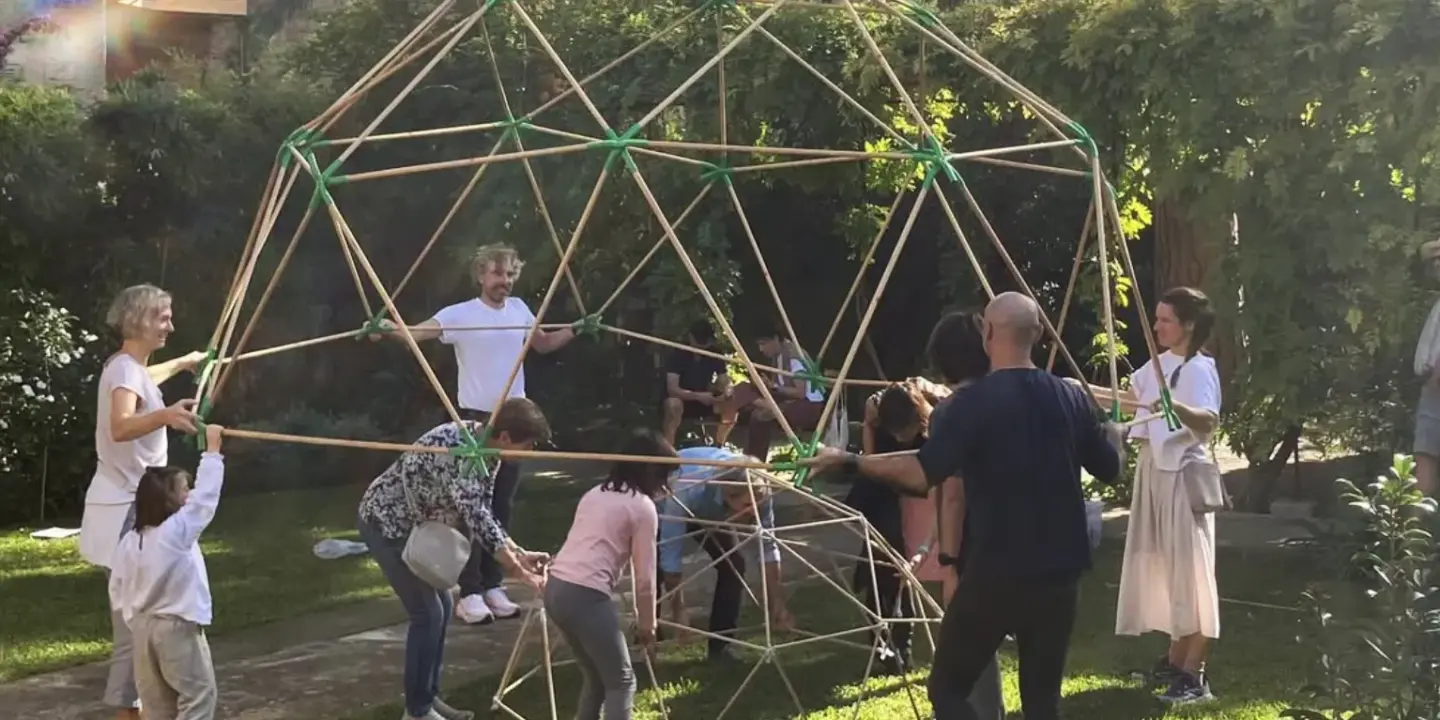Last Saturday, the second workshop in the Architecture and Nature series took place in the garden of Can Prunera, led by the architect Pablo Amor. Continuing with our particular philosophy, we began with a theoretical introduction, where children and their families could learn who the visionary architect Richard B. Fuller was, what he created, and why he was so important. He is widely recognized in the world of architecture not only for his creative and intelligent geodesic domes, but also for being one of the first men who, at the beginning of the 20th century, warned that the planet Earth we inhabit is finite, as are its natural resources. We could say that he was ahead of his time, because the technology of his contemporaries did not match the speed and authenticity of his ideas. It took years for technology to be ready to take on and begin to create Fuller’s works. He did not waste time or lose hope, and he discovered that nature is always wiser and more practical than human beings.
An example of this was his now famous geodesic domes, which used the geometric shape of the triangle as a backbone to support even the heaviest materials. The children attending the workshop, together with their parents, were able to collaboratively build several of these domes, appreciating the strength and lightness of the structure, as well as its durability and ease of construction. When they finished, they created a small city with wooden pieces just below the main dome, trying to imitate Fuller’s great dream: to build one of his gigantic domes over Manhattan, sheltering the New York district in a perpetual geometric embrace.
Next Saturday, November 15th, we will hold the last workshop in the series: Francis‘ House: Architecture with Clay. We will discover the inspiring story of the famous architect Francis Kéré, designer of incredible architecture using natural materials and with the participation of communities. Using the coil technique, we will manipulate clay to build small houses and a collective village.
